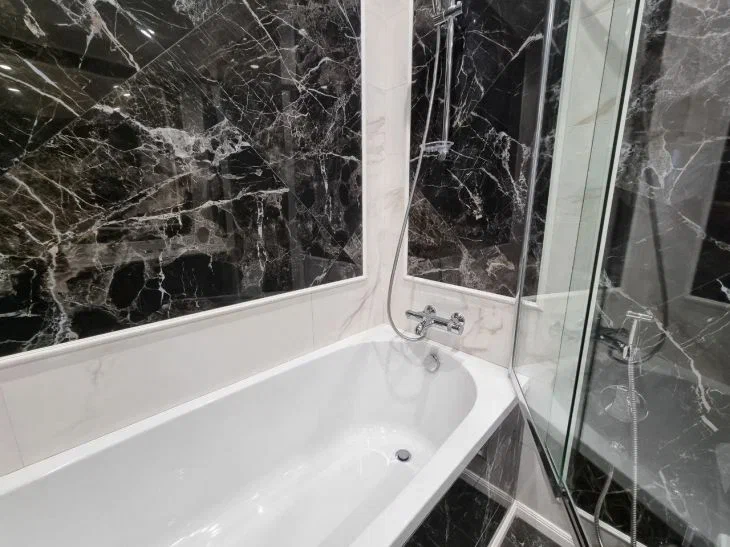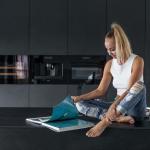Bath partitions, as you know, can be made of glass or plastic.
According to the expert of the online publication BelNovosti, designer Yulia Tychino , glass partitions are a more practical, environmentally friendly, durable and expensive option.
In turn, as the specialist explained, plastic partitions are cheaper, lighter and can be subject to scratches, “greasing” and loss of aesthetic appearance over time.
Therefore, the conclusion that is said suggests itself - a plastic screen for a bathroom is in many ways inferior to a glass one. Let's find out more about the latter option.
Typically, tempered glass up to 8 mm thick is used to make screens, which is resistant to moderate mechanical loads.

Glass can be transparent, matte or have a combined structure with blind inserts.
Clear glass allows light to pass through it, so such a partition is almost invisible, while frosted glass blocks the light flow and visually reduces the space.
Therefore, if frosted glass is used, it is important to think about lighting in advance. But there is also an advantage - an opaque partition provides privacy, which can be especially useful for large families and combined bathrooms.
To prevent water droplets from drying on the glass partition, but to quickly and without leaving a trace, the glass surface is treated with a special hydrophobic coating (please note that not all glass partitions have this coating, so check this point when purchasing).
If you choose a glass partition, you will not have to deal with the problem of mold, as happens when using textile curtains. To maintain cleanliness, it is enough to regularly wipe the glass surface and joints with a soft cloth soaked in a special cleaning agent.
However, it is not recommended to use abrasive cleaning agents, as well as products containing acids and chlorine, for cleaning.
Previously, we talked about which curtains are suitable for the kitchen and which ones are best avoided.









